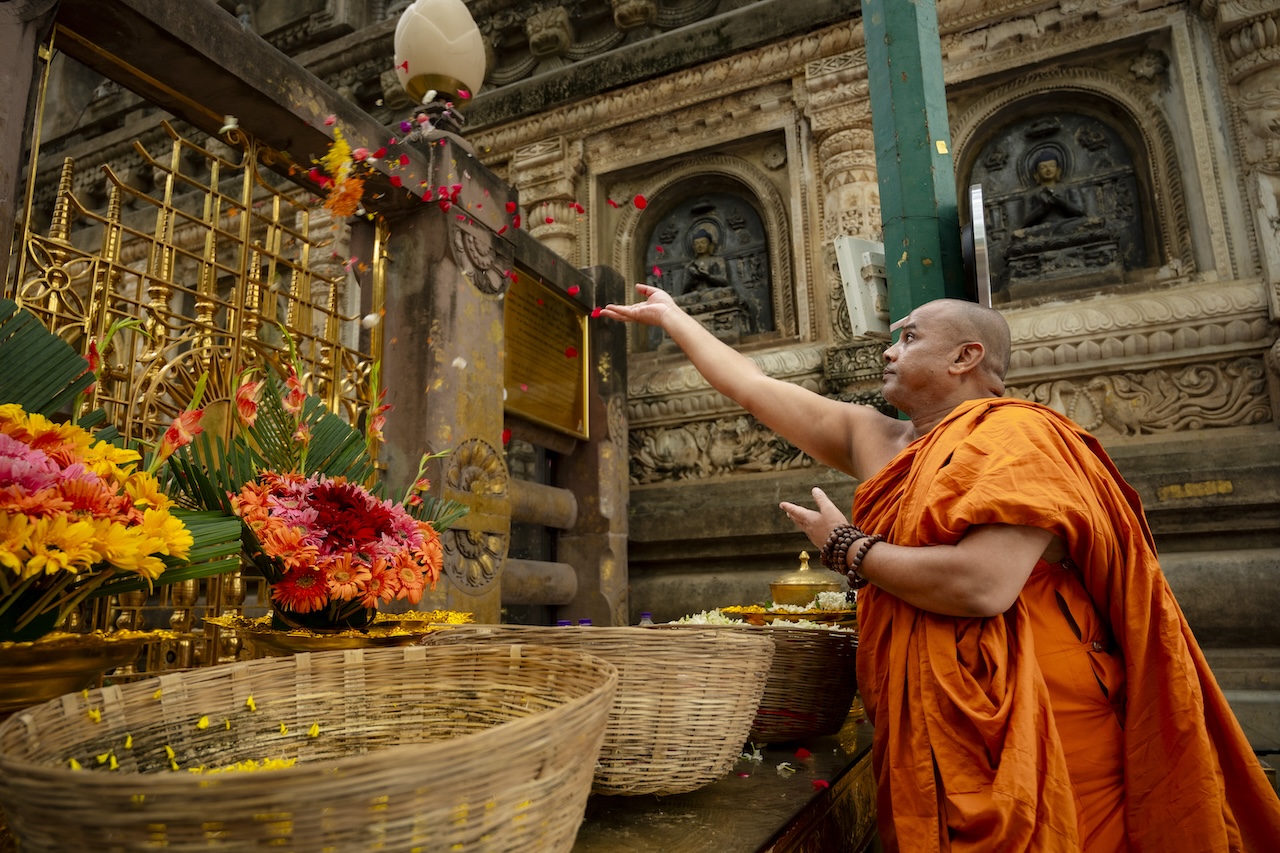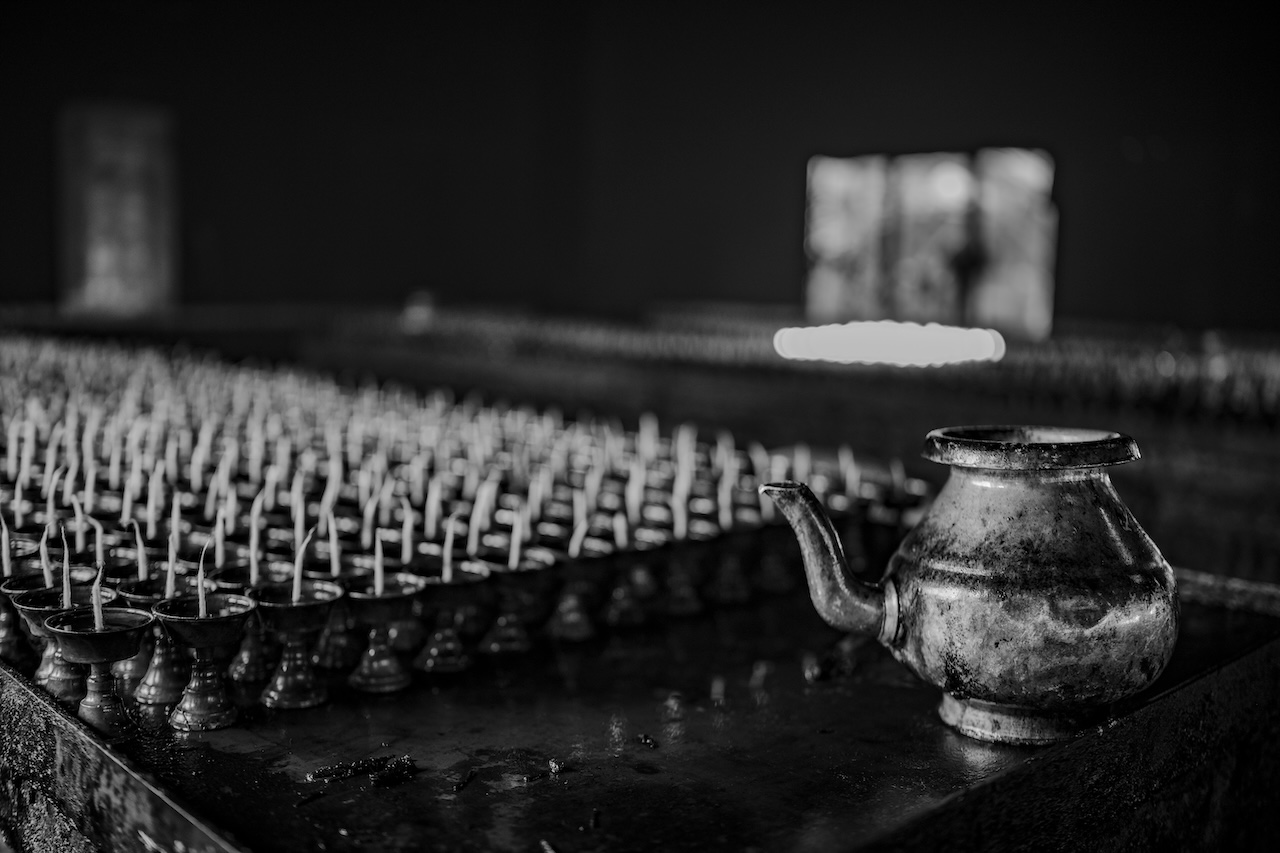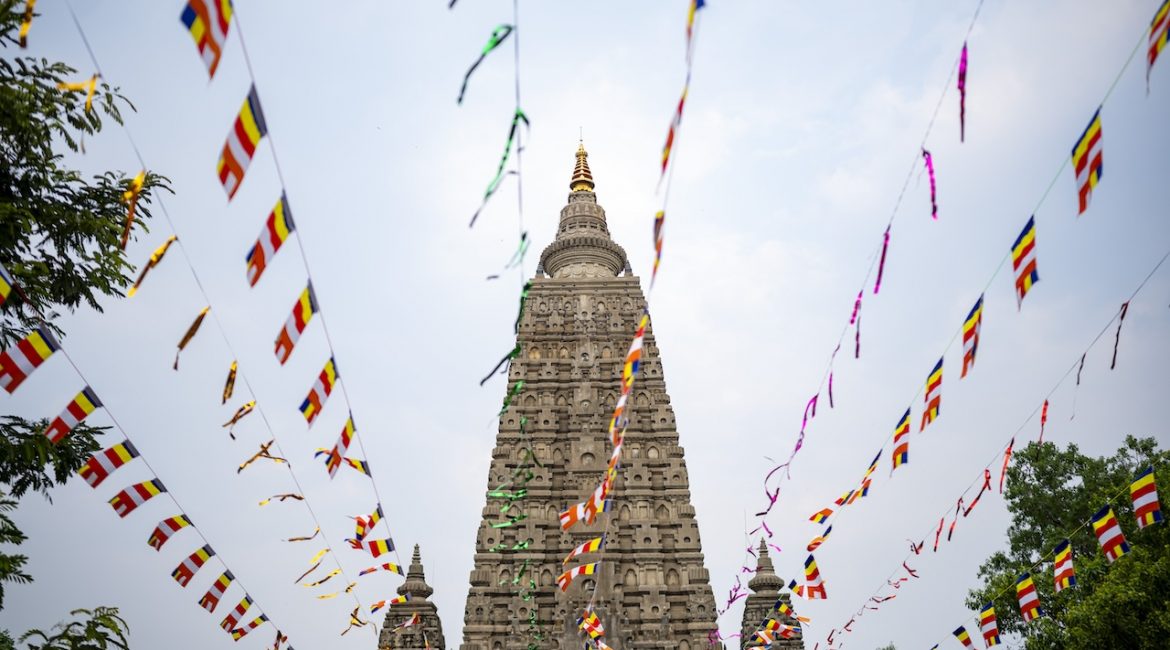The birth of Siddhartha Gautama is being celebrated this month. The exact date of Buddha’s Birthday is celebrated on different days due to varying lunisolar calendars across Asian cultures (for example, this year it’s 15 May in China and 23 May in India). It seems fitting that so many regions and cultures have their own date, because the Buddha is one of the most profound and mysterious figures of human history. He is the trace-less tathagata beyond all coming and going, the Blessed One whose presence is most strongly felt this Vesak and throughout the year at Bodh Gaya, in Maha Bodhi Temple.
If you want to draw close to the trace-less One Who Is, sit before the Bodhi Tree, the universal epicenter of the Buddhist world. The Bodhi Tree stretches its branches over devotees and pilgrims, a silent living witness to the trace-less one. On Vesak, the energy of the Diamond Throne (vajrasana), the immediate sanctuary below the Bodhi Tree protected by an enclosure of stone and metal painted in gold, is positively humming. The entire Buddhist diffusion and today’s Theravada, Mahayana, and Vajrayana radiates from this tree, this location, like ripples from a stone dropped into a pond.
The Buddha-era was from a period from before there was even writing in India, so in a way it is the most mysterious epoch of all, completely unreachable to us in a historical-critical sense. Buddhism emerges from this Buddha-era, without archaeology or written texts, as a tradition that appears in the Ashokan inscriptions from 268 BCE to 232 BCE. This was some two or three centuries after the Buddha-era, which according to Buddhist tradition was 2,500–2,600 years ago.

Then, a little later, Buddhist beliefs appear in illustrative form in narrative, artistic friezes in stupas and caves across the Indian subcontinent. The Bharhut Stupa conveys this art particularly beautifully. These murals tell the story of not only the life of Siddhartha Gautama, but they also contain the extraordinary, originally-orally-transmitted Jataka tales. They comprise a genre of literature that really is quite heroic and epic when you think about it: with the already enlightened Buddha serving as narrator, the various Jataka texts describe the Buddha’s past lives, and how he lived life after life as the Bodhisattva, as a monkey and other various animals, as human figures like a prince or an underprivileged person, or as a heavenly being.
This is not history, or even pre-history. This is primal history. He is a figure destined for enlightenment, yet his journey is a cosmic story where he “pre-enacts” the virtues that set him forth on the path of a Buddha-to-be: wisdom, self-sacrifice, loving-kindness, compassion, truthfulness . . . in some ways, the figure of Gautama cannot be seen without the context of the Jataka tales. He has appeared in the world again and again. One only needs to look for his presence.

The Buddha of our world’s final rebirth was that of the form of Siddhartha. In some ways, to celebrate only this particular rebirth, important though it is, is almost like watching a movie or performance only for its climactic, satisfying ending. I think the ancient Greeks would have argued that for true catharsis, one should sit through the whole play to understand the full significance and emotion of the story.
Similarly as Buddhists, we see the Buddha’s life as a grand, trans-lifetime odyssey that goes far beyond the typical religious founder’s few decades or years preaching a new movement. There is not only one birth of the Buddha when we commemorate Vesak: there are endless births, with at least 547 that were included in canonical collections long after they were visually told in caves and on stupas.
In this month of May, wherever you are in the world and whenever you celebrate the Buddha’s birth, enlightenment, and Parinirvana, I wish you and your close ones a joyful ushering-in of the Buddha-era – a cosmic epoch that goes far, far back, across many lifetimes, from the depths of primal history.


